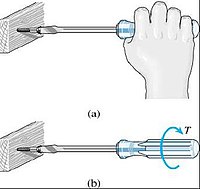
Photo from wikipedia
OBJECTIVES The purpose of this study was to determine current use, training needs, and barriers to point-of-care ultrasound (POCUS) use among anesthesiologists in practice. DESIGN Multicenter, prospective, observational study. SETTING… Click to show full abstract
OBJECTIVES The purpose of this study was to determine current use, training needs, and barriers to point-of-care ultrasound (POCUS) use among anesthesiologists in practice. DESIGN Multicenter, prospective, observational study. SETTING Anesthesiology departments in the Veterans Affairs Healthcare System in the United States. PARTICIPANTS Chiefs of staff and chiefs of anesthesiology departments. INTERVENTIONS A web-based survey was conducted between June 2019 and March 2020. Chiefs of staff answered questions about facility-level POCUS use, training, competency, and policies. Anesthesiology chiefs responded to a follow-up survey with specialty-specific POCUS questions. The results of the 2020 survey were compared with a similar survey conducted by the authors' group in 2015. MEASUREMENTS AND MAIN RESULTS All chiefs of staff (n = 130) and 77% of anesthesiology chiefs (n = 96) completed the survey. The most common POCUS applications used were central and peripheral vascular access (69%-72%), peripheral nerve blocks (66%), and evaluation of cardiac function (29%-31%). Compared with 2015, there was a statistically significant increase in desire for training (p = 0.00015), but no significant change in POCUS use (p = 0.31). Training was most desired for volume-status assessment (52%), left ventricular function (47%), pneumothorax (47%), central line placement (40%), peripheral nerve blocks (40%), and pleural effusion (40%). The most common barriers to POCUS use were lack of funding for training (35%), trained providers (33%), and training opportunities (28%). CONCLUSIONS A significant increase in desire for POCUS training was seen among anesthesiologists practicing in the Veterans Affairs healthcare system since 2015, and lack of training continues to be a top barrier for POCUS use among anesthesiologists.
Journal Title: Journal of cardiothoracic and vascular anesthesia
Year Published: 2023
Link to full text (if available)
Share on Social Media: Sign Up to like & get
recommendations!